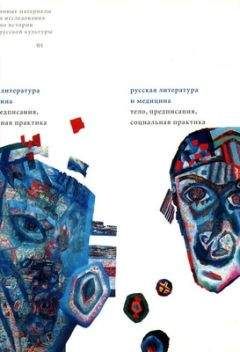ЕВА. История эволюции женского тела. История человечества - Бохэннон Кэт
de Goffau, M. C., Lager, S., Sovio, U., Gaccioli, F., Cook, E., Peacock, S. J., et al. (2019). Human placenta has no microbiome but can contain potential pathogens. Nature, 572(7769), 329–334. doi:10.1038/s41586-019-1451-5.
de Heinzelin, J., Clark, J. D., White, T., Hart, W., Renne, P., WoldeGabriel, G., et al. (1999). Environment and behavior of 2.5-million-year-old Bouri hominids. Science, 284(5414), 625–629.
de la Torre, I. (2016). The origins of the Acheulean: past and present perspectives on a major transition in human evolution. Philosophical Transactions of the Royal Society, 371, 20150245. doi:10.1098/rstb.2015.0245.
de Vries, E., den Tonkelaar, I., van Noord, P. A. H., van der Schouw, Y. T., te Velde, E. R., and Peeters, P. H. M. (2001). Oral contraceptive use in relation to age at menopause in the DOM cohort. Human Reproduction, 16(8), 1657– 1662. doi:10.1093/humrep/16.8.1657.
de Waal, F. B., and Suchak, M. (2010). Prosocial primates: selfish and unselfish motivations. Philosophical Transactions of the Royal Society, 365(1553), 2711– 2722. doi:10.1098/rstb.2010.0119.
Deag, J. M., and Crook, J. H. (1971). Social behaviour and “agonistic buffering” in the wild Barbary macaque Macaca sylvana L. Folia primatologica, 15(3–4), 183–200.
Deary, I. J., Johnson, W., and Houlihan, L. M. (2009). Genetic foundations of human intelligence. Human Genetics, 126(1), 215–232. doi:10.1007/s00439– 009-0655-4.
Deary, I. J., Strand, S., Smith, P., and Fernandes, C. (2007). Intelligence and educational achievement. Intelligence, 35(1), 13–21.
Deary, I. J., Thorpe, G., Wilson, V., Starr, J., and Whalley, L. (2003). Population sex differences in IQ at age 11: The Scottish Mental Survey 1932. Intelligence, 31, 533–542. doi:10.1016/S0160-2896(03)00053-9.
DeGiorgio, M., Jakobsson, M., & Rosenberg, N. A. (2009). Out of Africa: modern human origins special feature: explaining worldwide patterns of human genetic variation using a coalescent-based serial founder model of migration outward from Africa. Proceedings of the National Academy of Sciences of the United States of America, 106(38), 16057–16062. doi:10.1073/pnas.0903341106.
Dehara, M., Wells, M. B., Sjцqvist, H., Kosidou, K., Dalman, C., and Sцrberg Wallin, A. (2021). Parenthood is associated with lower suicide risk: a register-based cohort study of 1.5 million Swedes. Acta psychiatrica Scandinavica, 143(3), 206–215. doi:10.1111/acps.13240.
Delano, P. H., Elgueda, D., Hamame, C. M., and Robles, L. (2007). Selective attention to visual stimuli reduces cochlear sensitivity in chinchillas. The Journal of Neuroscience, 27(15), 4146–4153. doi:10.1523/JNEUROSCI.3702-06.2007.
Demuru, E., Ferrari, P. F., and Palagi, E. (2018). Is birth attendance a uniquely human feature? New evidence suggests that Bonobo females protect and support the parturient. Evolution and Human Behavior, 39(5), 502–510. doi:10.1016/j.evolhumbehav.2018.05.003.
Dennison, T., and Ogilvie, S. (2014). Does the European marriage pattern explain economic growth? The Journal of Economic History, 74(3), 651–693. doi:10.1017/S0022050714000564.
DeSilva, J. M. (2011). A shift toward birthing relatively large infants early in human evolution. Proceedings of the National Academy of Sciences, 108(3), 1022–1027.
DeSilva, J. M., Laudicina, N. M., Rosenberg, K. R., and Trevathan, W. R. (2017). Neonatal shoulder width suggests a semirotational, oblique birth mechanism in Australopithecus afarensis. The Anatomical Record, 300(5), 890–899.
DeSilva, J., and Lesnik, J. (2006). Chimpanzee neonatal brain size: Implications for brain growth in Homo erectus. Journal of Human Evolution, 51(2), 207–212.
Di Mascio, D., Saccone, G., Bellussi, F., Vitagliano, A., and Berghella, V. (2020). Type of paternal sperm exposure before pregnancy and the risk of preeclampsia: A systematic review. European Journal of Obstetrics & Gynecology and Reproductive Biology, 251, 246–253. doi:10.1016/j.ejogrb.2020.05.065.
Di Stefano, N., Ghilardi, G., and Morini, S. (2017). Leonardo’s mistake: not evidence-based medicine? The Lancet, 390(10097), 845. doi:10.1016/S0140– 6736(17)32140‑2.
Diamanti-Kandarakis, E., Bourguignon, J. P., Giudice, L. C., Hauser, R., Prins, G. S., Soto, A. M., et al. (2009). Endocrine-disrupting chemicals: an Endocrine Society scientific statement. Endocrine Reviews, 30(4), 293–342.
Diamond, J. (1995). “Father’s Milk.” Discover, 16(2), 82–87.
Diebolt, C., & Perrin, F. (2013). From stagnation to sustained growth: The role of female Empowerment. American Economic Review, 103(3), 545–549. doi:10.1257/aer.103.3.545.
Diez-Martнn, F., Sбnchez, P., Domнnguez-Rodrigo, M., Mabulla, A., and Barba, R. (2009). Were Olduvai Hominins making butchering tools or battering tools? Analysis of a recently excavated lithic assemblage from BK (Bed II, Olduvai Gorge, Tanzania). Journal of Anthropological Archaeology, 28(3), 274–289. doi:10.1016/j.jaa.2009.03.001.
Ding, W., Yang, L., and Xiao, W. (2013). Daytime birth and parturition assistant behavior in wild black-and-white snub-nosed monkeys (Rhinopithecus bieti) Yunnan, China. Behavioural Processes, 94, 5–8. doi:10.1016/j. beproc.2013.01.006.
Diogo, R., Molnar, J. L., and Wood, B. (2017). Bonobo anatomy reveals stasis and mosaicism in chimpanzee evolution, and supports bonobos as the most appropriate extant model for the common ancestor of chimpanzees and humans. Scientific Reports, 7(1), 608.
Dixson, A. F. (2018). Copulatory and Postcopulatory Sexual Selection in Primates. Folia Primatologica, 89(3–4), 258–286. doi:10.1159/000488105.
Dixson, A. L., and Anderson, M. J. (2002). Sexual selection, seminal coagulation and copulatory plug formation in primates. Folia Primatologica, 73(2–3), 63– 69. doi:10.1159/000064784.
Dobolyi, A., Olбh, S., Keller, D., Kumari, R., Fazekas, E. A., Csikуs, V., et al. (2020). Secretion and function of pituitary prolactin in evolutionary perspective. Frontiers in Neuroscience, 14, 621. doi:10.3389/fnins.2020.00621.
Dodge, B., Reece, M., and Herbenick, D. (2009). School-based condom education and its relations with diagnoses of and testing for sexually transmitted infections among men in the United States. American Journal of Public Health, 99(12), 2180–2182. doi:10.2105/AJPH.2008.159038.
Dollй, J. P., Jaye, A., Anderson, S. A., Ahmadzadeh, H., Shenoy, V. B., and Smith,
D. H. (2018). Newfound sex differences in axonal structure underlie differential outcomes from in vitro traumatic axonal injury. Experimental Neurology, 300, 121–134. doi:10.1016/j.expneurol.2017.11.001.
Dong, X., Milholland, B., and Vijg, J. (2016). Evidence for a limit to human lifespan. Nature, 538, 257–259. doi:10.1038/nature19793.
Donovan, M. P., Iglesias, A., Wilf, P., Labandeira, C. C., and Cъneo, N. R. (2016). Rapid recovery of Patagonian plant-insect associations after the end-Cretaceous extinction. Nature Ecology & Evolution, 1(1), 0012. doi:10.1038/ s41559-016-0012.
Donovan, M. P., Iglesias, A., Wilf, P., Labandeira, C. C., and Cъneo, N. R. (2018). Diverse plant-insect associations from the Latest Cretaceous and Early Paleocene of Patagonia, Argentina. Ameghiniana, 55(3), 303–338, 336. doi:10.5710/AMGH.15.02.2018.3181.
Doty, R. L., and Cameron, E. L. (2009). Sex differences and reproductive hormone influences on human odor perception. Physiology & Behavior, 97(2), 213–228. Douglas, P. H. (2014). Female sociality during the daytime birth of a wild bonobo at Luikotale, Democratic Republic of the Congo. Primates, 55(4), 533–542. doi:10.1007/s10329-014-0436-0.
Dreger., A. D. (1998). Hermaphrodites and the Medical Invention of Sex. Cambridge, Mass.: Harvard University Press.
Drewett, R., Bowen-Jones, A., and Dogterom, J. (1982). Oxytocin levels during breast-feeding in established lactation. Hormones and Behavior, 16(2), 245– 248.




